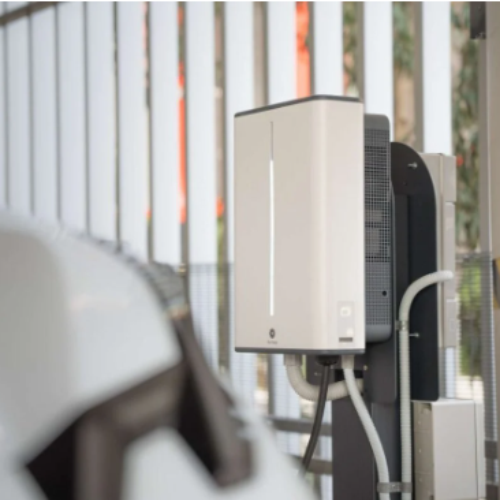The UK hit two maximum wind generation records within a week, according to data from the National Energy System Operator (NESO).
On 15 December, 22,243MW of wind capacity was in operation at 6:30pm to achieve a maximum wind record for Great Britain, beating the previous record of 21,998MW, set on 10 January 2023.
The record did not stand for long, though, because on 18 December at 3:30 a.m., 22,523MW of wind capacity was in operation electricity, setting a new record.
During the third quarter of 2024, renewables accounted for 50.5% of electricity generation in Great Britain. Electricity statistics from the Department for Energy Security and Net Zero (DESNZ) show that during Q3, fossil fuel generation was 29% lower than in Q3 2023, accounting for 17.9TWh.
This marks the fourth consecutive quarter that renewables comprised over half of UK generation.

Renewable electricity generation was 32.2TWh in Quarter 3 2024, 6.5% higher than 2023. DESNZ also states that over the last year, 2.7GW of renewable capacity has been added: 1.6MW solar PV, 0.4GW offshore wind and 0.6GW onshore wind. Three quarters of this, the department says, occurred in the most recent quarter (which runs July to September, coinciding with the new government coming to power).

There was a 4.5% drop in offshore wind generation, which DESNZ attributes to lower wind speeds. It also states the increase in onshore wind generation could be due to a higher level of new capacity.
Although this year’s sun hours were the same as Q3 last year, a 10% increase in solar PV capacity saw a 9.2% increase in generation.
The cost of curtailment
Although generation milestones are being hit, the UK’s electricity grid cannot support the amount of energy generated at peak times. On 18 December, when wind’s latest record was made, Robin Hawkes, responsible for data visualisation at Octopus Energy, shared that ‘wasted’ wind had cost Britain “well over” £6 million by 8:30am.
In a LinkedIn post, Hawkes wrote that, due to grid constraints, wind farms in Scotland were turned off: “It’s plenty windy for them to generate electricity, we just can’t get the power where it’s needed.”
The total cost of this on 18 December reached £12,630,126, broken down as £4,172,190 for switching off wind turbines and £8,457,935 buying energy elsewhere.
Previously, energy storage developer Field suggested wind curtailment costs could be slashed by up to 80% annually if sufficient battery energy storage is developed. Field said that the B6 boundary, a pinch point between the Scottish and English borders, caused most curtailment costs across the year.
In a blog for Current±, Chris Wickins, technical director of Field, wrote that the problem looks set to get worse as the rate of installation of new offshore wind outpaces the growth of network infrastructure; by 2030, constraints payments along the B6 boundary could cost bill payers as much as £2.2 billion.






